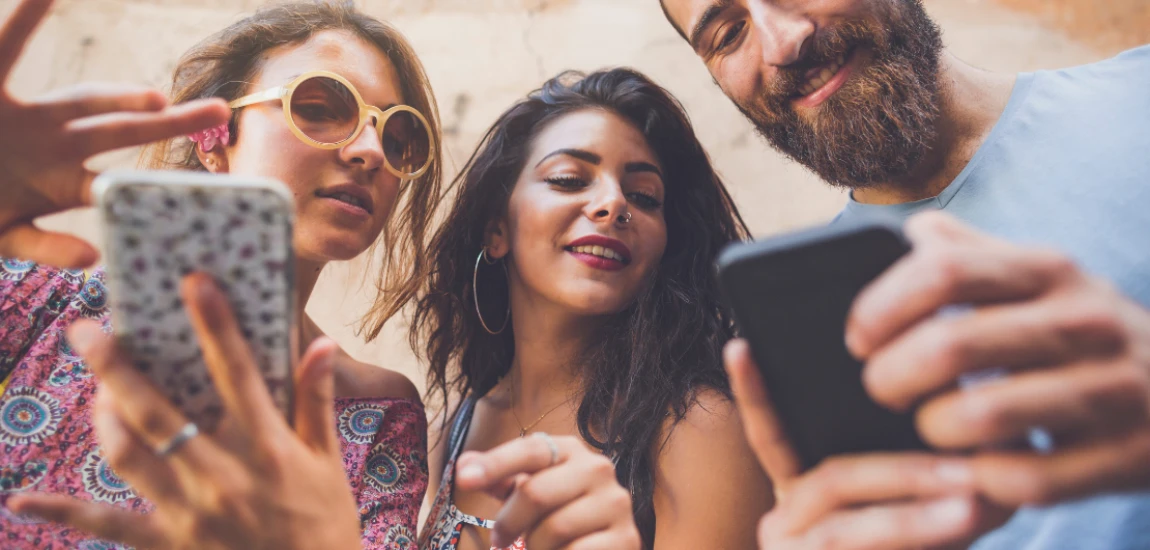Face Filters & Fluid Identity: Playing with Self in the Augmented Era

A few swipes on your phone can transform you into anyone—or anything. A flower-crowned bohemian, a futuristic cyborg, or a flawless version of yourself. Face filters, powered by augmented reality (AR), have shifted from playful gimmicks to powerful tools of self-expression. They allow users to experiment with identity, blurring the line between reality and performance.
The rise of face filters and fluid identity signals a cultural shift in how people present themselves online. These digital overlays are more than fun effects; they’re reshaping beauty standards, fueling creativity, and redefining what it means to have an “authentic” self in the digital era. This blog explores how face filters impact identity, the psychology behind their popularity, and what this means for our digital future.
The Evolution of Face Filters in Digital Culture

Face filters began as novelties on Snapchat and Instagram, but today they’re integral to digital communication and culture. Their evolution reveals how playful tools can become vehicles for deeper cultural change.
From Fun Effects to Everyday Tools
At first, face filters were designed for humor—a dog tongue, oversized glasses, or rainbow vomit. But over time, they became more sophisticated, offering beauty enhancements, makeup simulations, and even fantasy-driven designs. What started as a joke now shapes daily online interaction.
Integration into Social Media Platforms
Platforms like Instagram, TikTok, and Snapchat have embedded AR filters into their DNA. Users don’t just post selfies; they perform curated versions of themselves. Filters have become part of how people tell stories, share moods, and connect with communities.
Normalization of Augmented Identity
The more filters are used, the more normalized they become. Today, presenting a digitally altered self is not just acceptable—it’s often expected. This shift raises questions about where the line between “real” and “augmented” self truly lies.
The Psychology Behind Fluid Identity

Why are people so drawn to face filters? The answer lies in psychology. Filters allow users to experiment with identity in ways that satisfy deep human desires for self-exploration, validation, and control.
Escaping Reality and Experimenting with Self
Filters provide a low-stakes way to try on different versions of yourself. You can become younger, older, or embody a fantasy persona. This fluidity lets users explore identities they might not otherwise express in real life.
Boosting Confidence and Self-Esteem
Beauty filters can temporarily enhance confidence by smoothing skin, reshaping features, or adding glamour. For many, this creates a sense of empowerment—though it also raises concerns about dependency and self-image.
Social Validation and Belonging
Filters are often tied to trends. Using the latest filter can make users feel included in online conversations, reinforcing social belonging. This collective participation highlights how digital tools can foster both individual expression and community identity.
Face Filters and the Reinvention of Beauty Standards

One of the most significant effects of face filters is their impact on beauty culture. By constantly reshaping how people see themselves, filters redefine what “attractive” means in the augmented era.
The Rise of the “Filtered Face”
Softened skin, bigger eyes, fuller lips—filters often exaggerate traits already glorified in popular culture. This creates a new, digitally enhanced beauty standard, where the “ideal” face is often not naturally achievable.
Positive Empowerment Through Creativity
Not all filters promote unrealistic ideals. Some embrace artistic creativity, transforming users into characters or surreal works of art. These playful filters celebrate diversity in expression, encouraging users to step outside traditional beauty norms.
The Double-Edged Sword of Perfection
While filters can empower, they can also harm. Research suggests heavy filter use can contribute to body dysmorphia and unrealistic expectations. This raises important ethical questions about how technology influences mental health and cultural standards of beauty.
Identity Play and Cultural Expression

Beyond beauty, face filters allow people to explore cultural identity, humor, and even political commentary. They’ve become a language of their own in digital spaces.
Filters as Digital Costumes
Like masks or costumes, filters allow users to embody roles. From fantasy creatures to celebrities, these digital personas enable playful self-reinvention. This makes filters powerful tools for storytelling and creativity.
Meme Culture and Collective Expression
Filters are often at the center of viral trends. A filter that distorts faces or adds funny effects can quickly become part of meme culture. Through shared participation, users create collective digital experiences that transcend borders.
Cultural Commentary and Activism
Some filters are designed to highlight cultural issues or identities. For example, AR artists create filters that showcase indigenous designs, gender fluidity, or political messages. These digital tools become more than entertainment—they become platforms for awareness.
The Role of Technology in Shaping Augmented Identity

The way filters function isn’t just about culture—it’s also about the technology that powers them. Advances in AR, AI, and machine learning are expanding what’s possible in the augmented era.
Augmented Reality and Precision Mapping
AR technology now maps facial features with incredible accuracy, allowing for realistic overlays that adapt to expressions and movement. This makes filters more seamless and immersive.
AI-Powered Personalization
Artificial intelligence allows filters to adapt to individuals, offering personalized experiences. From virtual try-ons for fashion and makeup to custom effects, AI is making filters more interactive and consumer-driven.
Integration into E-Commerce
Filters are now key tools for online shopping. Brands use AR to let consumers “try on” products virtually, from sunglasses to lipstick. This blurs the line between self-expression and consumerism, expanding the commercial role of filters.
The Future of Fluid Identity in the Augmented Era

As face filters evolve, so too will the way we think about identity. The future promises even more fluid, immersive, and personalized forms of self-expression.
Virtual Avatars and Metaverse Identities
Filters are precursors to full virtual avatars in the metaverse. In digital worlds, people can embody entirely new identities, transcending physical limitations and experimenting with fluid selves on a larger scale.
Ethical Concerns and Digital Wellbeing
The more filters shape self-image, the more ethical concerns arise. Developers, brands, and platforms will face pressure to design tools responsibly, ensuring they empower rather than harm. Transparency, moderation, and mental health considerations will become essential.
Expanding Diversity and Representation
Future filters may highlight inclusivity, offering representations that celebrate a wider range of identities, ethnicities, and body types. As filters move beyond beauty ideals, they could become tools for amplifying diversity in the digital space.




